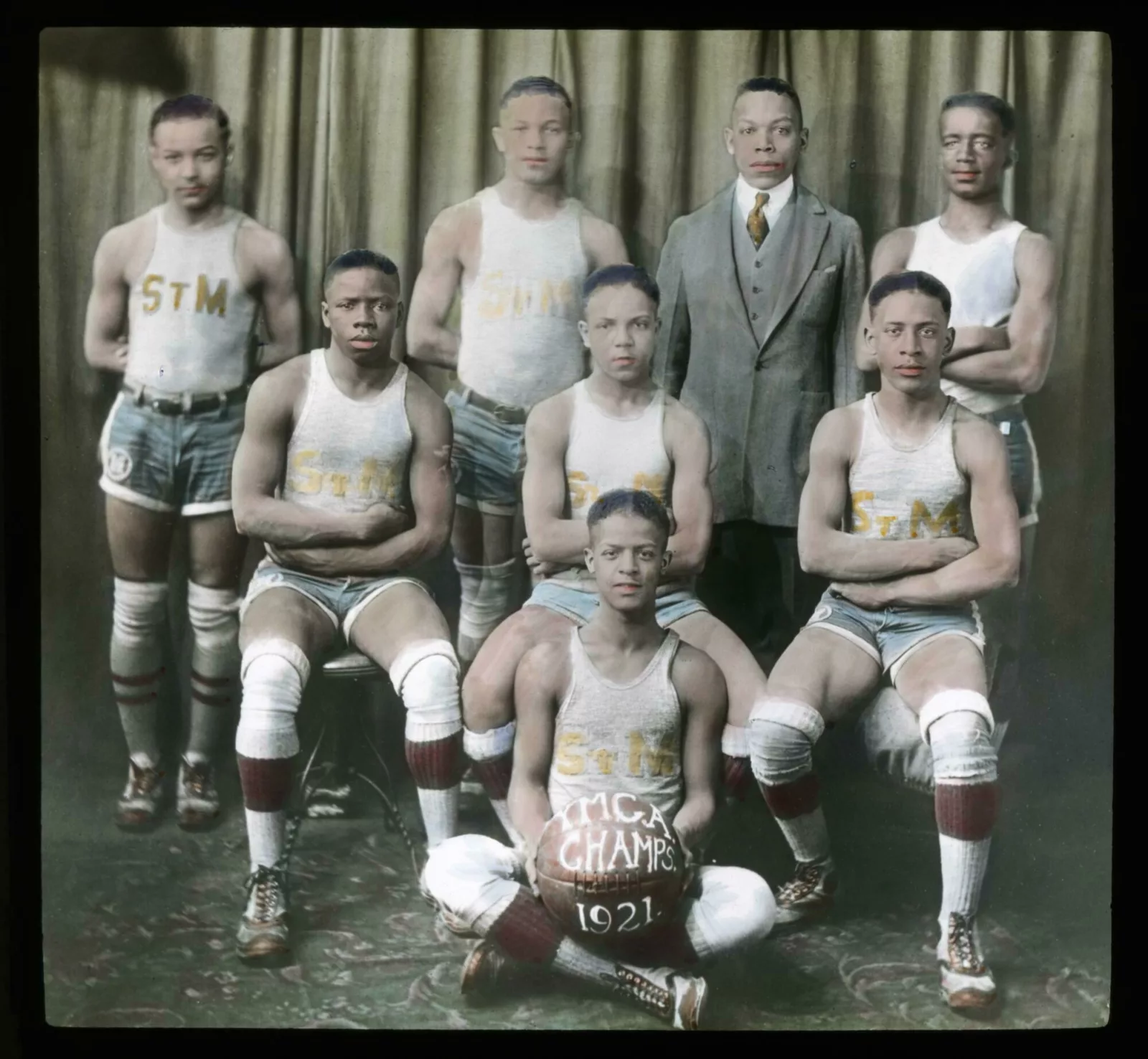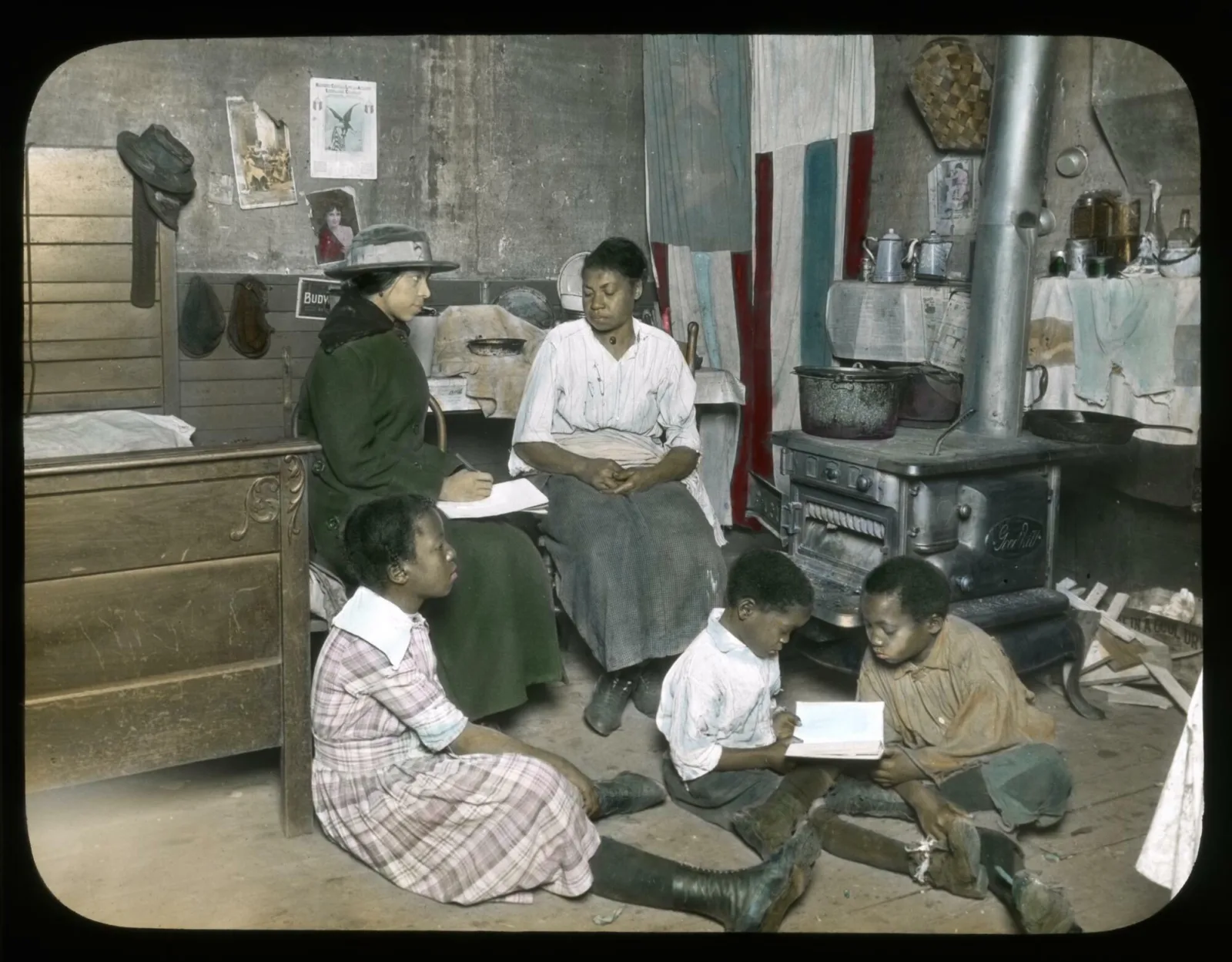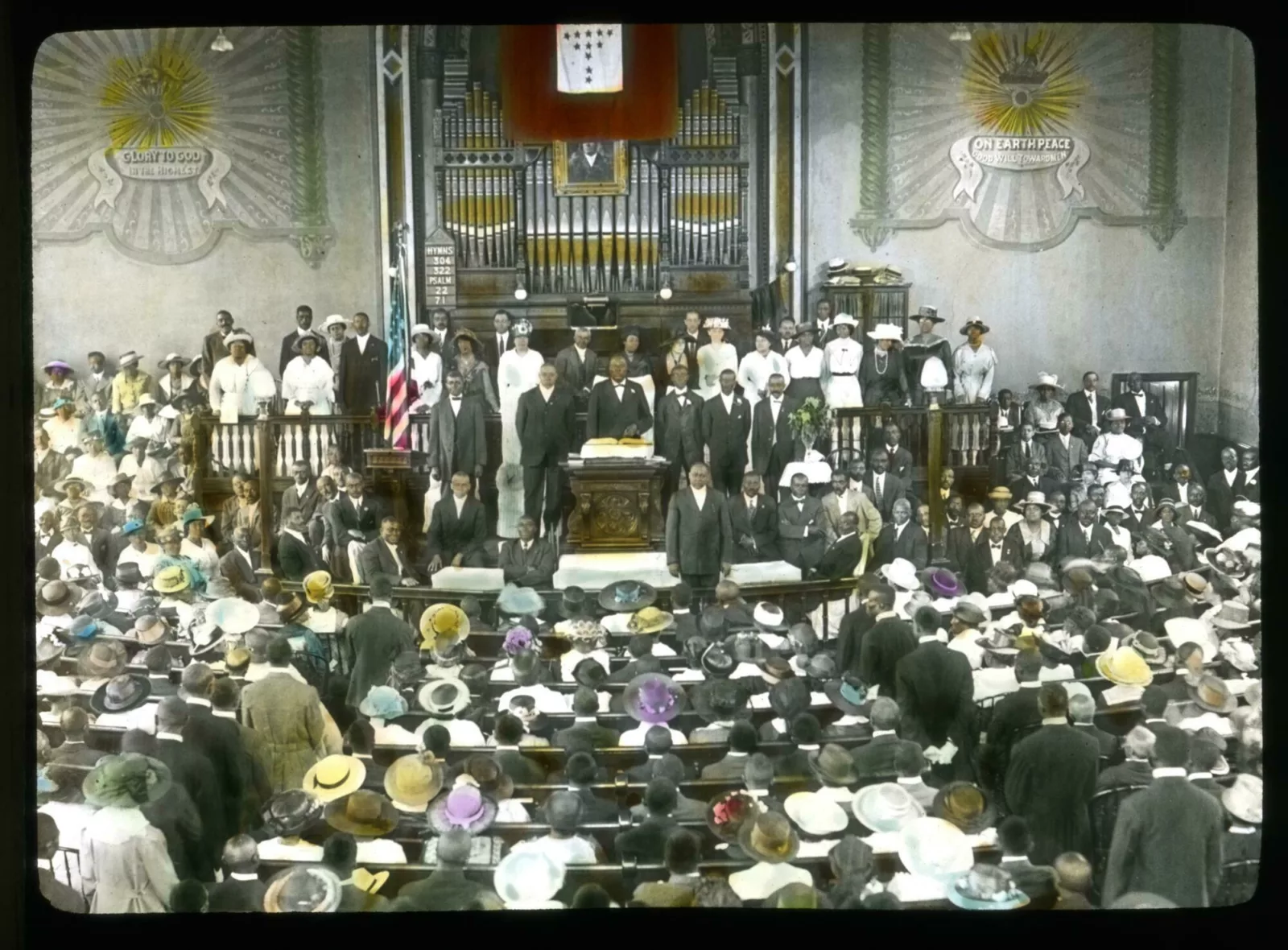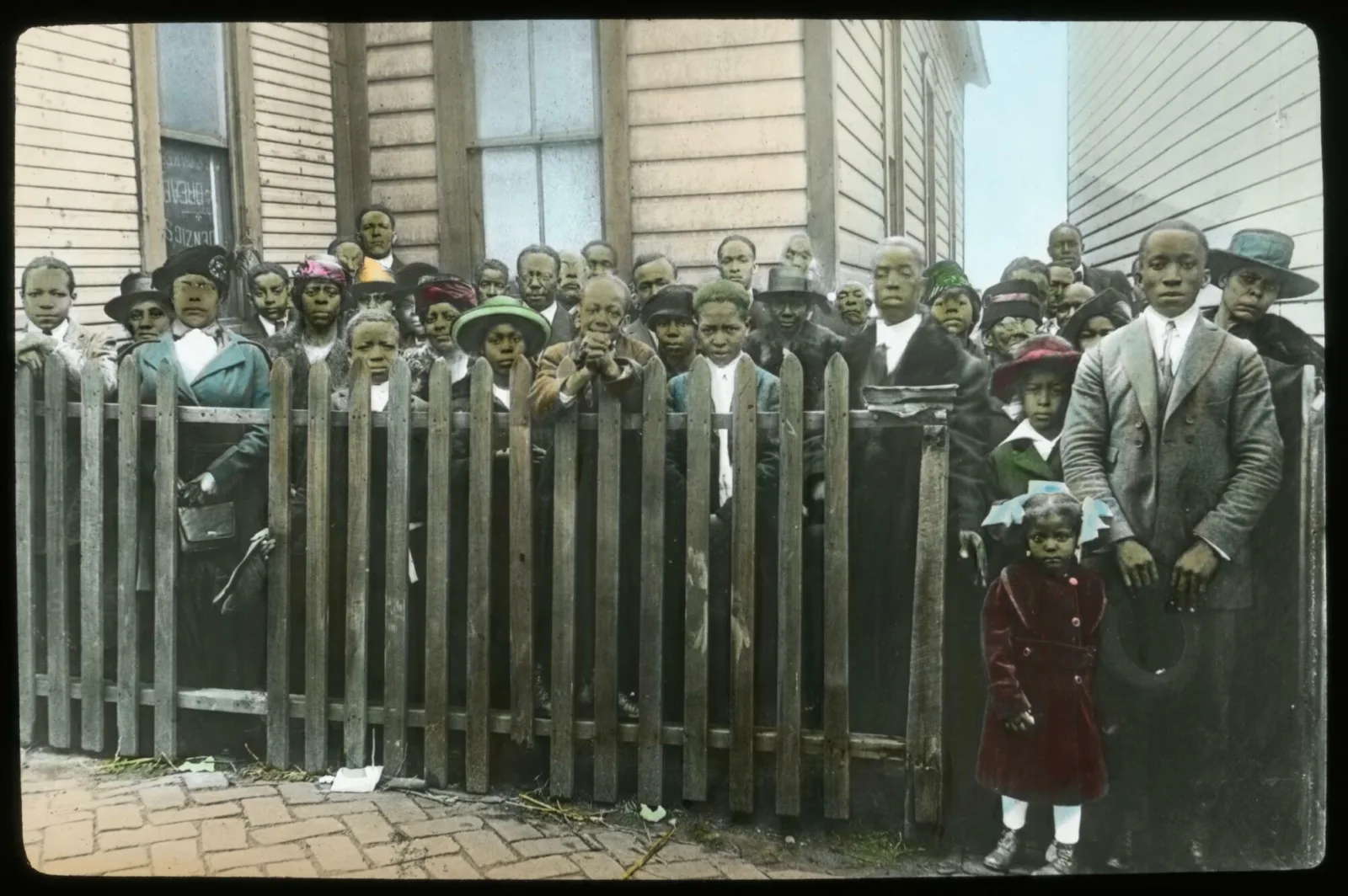The Newberry has acquired a set of rare images documenting African American communities in Chicago and other northern cities in the first two decades of the 20th century.
Collectively, the 44 glass slides are a striking visual record of the Great Migration, when millions of African Americans relocated from rural areas of the South to urban centers of the North. The images now available at the Newberry offer a window into the new lives Black migrants built for themselves: there are images of youth basketball players posing for a team photo, nurses caring for children, men working in a foundry, and families attending church together.

Produced by the Methodist Episcopal Church, in collaboration with leading Black churches in Chicago, these slides are the most complete set known to survive. Few, if any, of the images have ever been published.
“We were thrilled to acquire these powerful images and make them available for the first time to researchers and members of the public,” said Will Hansen, Curator of Americana at the Newberry. “Not only are the images freely accessible online, users may also view them alongside the rest of the Newberry’s growing digital collections in order to deepen their understanding of this critical period in American history.”

The original purpose of the glass slides (also known as magic lantern slides) was likely to raise funds for the Methodist Episcopal Church’s activities assisting migrants, and to inform congregations and Black communities of the support available to migrants in the North. A representative of the Methodist Episcopal Church traveled with the slides, presenting them to groups of people who might have been interested in moving to Chicago. The slides are accompanied by their original carrying case and a pamphlet which includes information about each slide.
“These unusual, hand-colored images are a unique resource for those studying the mass movement of Black Americans in the early 20th century and who are interested in the support provided by Black churches,” said Miriam Thaggert, Associate Professor of English at the University of Buffalo. “Visitors interested in Black labor and sports will also find these slides extremely valuable.”

"These slides are essential to researchers as rare examples of the visual culture of the Great Migration, one of the largest movements of people in US history," said Wendy Castenell, Assistant Professor of Art History at Washington and Lee University, and a Long-Term Fellow at the Newberry. "These images help to document the formation of a cohesive national African American community, and will broaden and enrich the extant textual record on the topic."
The 44 images from the Great Migration are now available to view and download for free online. Under an open access policy, images from the Newberry’s collection can be used for any lawful purpose without paying licensing or permission fees to the library.
About the Newberry
The Newberry Library—free and open to the public—fosters a deeper understanding of our world by inspiring research and learning in the humanities and encouraging conversations about ideas that matter. The Newberry’s extensive and growing collection of books, maps, and archival materials is a portal to more than six centuries of human experience. Every year, thousands of writers, artists, scholars, teachers, and students visit the Newberry, contributing to its diverse community of learning.
